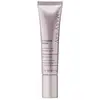What's inside
What's inside
 Key Ingredients
Key Ingredients

 Benefits
Benefits

 Concerns
Concerns

 Ingredients Side-by-side
Ingredients Side-by-side

Water
Skin ConditioningDimethicone
EmollientGlycerin
HumectantDimethicone Crosspolymer
Emulsion StabilisingRetinol
Skin ConditioningRetinyl Propionate
Skin ConditioningNiacinamide
SmoothingTocopheryl Acetate
AntioxidantC13-14 Isoparaffin
EmollientDimethiconol
EmollientPolysorbate 20
EmulsifyingLaureth-4
EmulsifyingLaureth-7
EmulsifyingDisodium EDTA
Polyacrylamide
Acrylates/C10-30 Alkyl Acrylate Crosspolymer
Emulsion StabilisingAminomethyl Propanol
BufferingTitanium Dioxide
Cosmetic ColorantDMDM Hydantoin
PreservativeIodopropynyl Butylcarbamate
PreservativeWater, Dimethicone, Glycerin, Dimethicone Crosspolymer, Retinol, Retinyl Propionate, Niacinamide, Tocopheryl Acetate, C13-14 Isoparaffin, Dimethiconol, Polysorbate 20, Laureth-4, Laureth-7, Disodium EDTA, Polyacrylamide, Acrylates/C10-30 Alkyl Acrylate Crosspolymer, Aminomethyl Propanol, Titanium Dioxide, DMDM Hydantoin, Iodopropynyl Butylcarbamate
Water
Skin ConditioningGlycerin
HumectantPetrolatum
EmollientParaffinum Liquidum
EmollientHydrogenated Polydecene
EmollientCetyl Esters
EmollientBis-Diglyceryl Polyacyladipate-2
EmollientButylene Glycol
HumectantHydrogenated Polyisobutene
EmollientSorbitan Olivate
EmulsifyingCetearyl Olivate
Hexyldecanol
EmollientCetyl Palmitate
EmollientTetrahexyldecyl Ascorbate
AntioxidantMagnolia Grandiflora Bark Extract
AntimicrobialCentella Asiatica Extract
CleansingBisabolol
MaskingHesperidin Methyl Chalcone
AntioxidantPisum Sativum Extract
Skin ConditioningCitrus Grandis Peel Extract
AstringentMagnolia Biondii Flower Extract
Skin ConditioningTetradecyl Aminobutyroylvalylaminobutyric Urea Trifluoroacetate
Skin ConditioningCentella Asiatica Meristem Cell Culture
AntioxidantDipeptide-2
Skin ConditioningPalmitoyl Tetrapeptide-7
Skin ConditioningTripeptide-1
Skin ConditioningBrassica Campestris Sterols
EmollientTocopheryl Acetate
AntioxidantSteareth-20
CleansingStearic Acid
CleansingPropylene Glycol
HumectantCetylhydroxyproline Palmitamide
Skin ConditioningSorbitan Palmitate
EmulsifyingAcrylates/C10-30 Alkyl Acrylate Crosspolymer
Emulsion StabilisingCetearyl Alcohol
EmollientCeteareth-20
CleansingTriethanolamine
BufferingDisodium EDTA
Silica
AbrasiveEthylene/Methacrylate Copolymer
Isopropyl Titanium Triisostearate
EmollientHydroxypropyl Cyclodextrin
MaskingSodium Citrate
BufferingPotassium Benzoate
PreservativeChlorhexidine Digluconate
AntimicrobialPhenoxyethanol
PreservativeDiazolidinyl Urea
PreservativeIodopropynyl Butylcarbamate
PreservativeMagnesium Chloride
Water, Glycerin, Petrolatum, Paraffinum Liquidum, Hydrogenated Polydecene, Cetyl Esters, Bis-Diglyceryl Polyacyladipate-2, Butylene Glycol, Hydrogenated Polyisobutene, Sorbitan Olivate, Cetearyl Olivate, Hexyldecanol, Cetyl Palmitate, Tetrahexyldecyl Ascorbate, Magnolia Grandiflora Bark Extract, Centella Asiatica Extract, Bisabolol, Hesperidin Methyl Chalcone, Pisum Sativum Extract, Citrus Grandis Peel Extract, Magnolia Biondii Flower Extract, Tetradecyl Aminobutyroylvalylaminobutyric Urea Trifluoroacetate, Centella Asiatica Meristem Cell Culture, Dipeptide-2, Palmitoyl Tetrapeptide-7, Tripeptide-1, Brassica Campestris Sterols, Tocopheryl Acetate, Steareth-20, Stearic Acid, Propylene Glycol, Cetylhydroxyproline Palmitamide, Sorbitan Palmitate, Acrylates/C10-30 Alkyl Acrylate Crosspolymer, Cetearyl Alcohol, Ceteareth-20, Triethanolamine, Disodium EDTA, Silica, Ethylene/Methacrylate Copolymer, Isopropyl Titanium Triisostearate, Hydroxypropyl Cyclodextrin, Sodium Citrate, Potassium Benzoate, Chlorhexidine Digluconate, Phenoxyethanol, Diazolidinyl Urea, Iodopropynyl Butylcarbamate, Magnesium Chloride
Ingredients Explained
These ingredients are found in both products.
Ingredients higher up in an ingredient list are typically present in a larger amount.
Acrylates/C10-30 Alkyl Acrylate Crosspolymer is a synthetic polymer. It is used to thicken and improve the texture of products. Due to its properties, it can prevent water and oil ingredients from separating.
Disodium EDTA plays a role in making products more stable by aiding other preservatives.
It is a chelating agent, meaning it neutralizes metal ions that may be found in a product.
Disodium EDTA is a salt of edetic acid and is found to be safe in cosmetic ingredients.
Learn more about Disodium EDTAGlycerin is already naturally found in your skin. It helps moisturize and protect your skin.
A study from 2016 found glycerin to be more effective as a humectant than AHAs and hyaluronic acid.
As a humectant, it helps the skin stay hydrated by pulling moisture to your skin. The low molecular weight of glycerin allows it to pull moisture into the deeper layers of your skin.
Hydrated skin improves your skin barrier; Your skin barrier helps protect against irritants and bacteria.
Glycerin has also been found to have antimicrobial and antiviral properties. Due to these properties, glycerin is often used in wound and burn treatments.
In cosmetics, glycerin is usually derived from plants such as soybean or palm. However, it can also be sourced from animals, such as tallow or animal fat.
This ingredient is organic, colorless, odorless, and non-toxic.
Glycerin is the name for this ingredient in American English. British English uses Glycerol/Glycerine.
Learn more about GlycerinIodopropynyl Butylcarbamate is a preservative.
Tocopheryl Acetate is AKA Vitamin E. It is an antioxidant and protects your skin from free radicals. Free radicals damage the skin by breaking down collagen.
One study found using Tocopheryl Acetate with Vitamin C decreased the number of sunburned cells.
Tocopheryl Acetate is commonly found in both skincare and dietary supplements.
Learn more about Tocopheryl AcetateWater. It's the most common cosmetic ingredient of all. You'll usually see it at the top of ingredient lists, meaning that it makes up the largest part of the product.
So why is it so popular? Water most often acts as a solvent - this means that it helps dissolve other ingredients into the formulation.
You'll also recognize water as that liquid we all need to stay alive. If you see this, drink a glass of water. Stay hydrated!
Learn more about Water